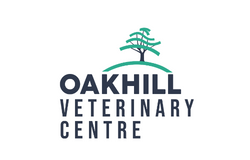ALTERNATIVE STRATEGIES FOR WORM CONTROL
Resistance to commonly used wormers in sheep has been reported since the 1980s but more recently resistant worms have been found on up to 100% of farms. Therefore, it is increasingly important to change how we use wormers to avoid selecting for resistance and to ensure that we continue to have these tools for the future. The recent testing requirements as part of the Animal Health and Welfare Pathway encourage farmers to identify resistance on their farm and therefore begin to understand how well their worming strategies are working. Following guidance from SCOPS (Sustainable Control of Parasites in Sheep) is important to make sure wormers are being used appropriately (see below); but what other options are there for worm control that don’t involve use of wormers?
There are 3 areas to consider when trying to reduce dependence on wormers: decreasing exposure to worms, increasing sheep resistance to infection and reducing the impact that infection has….
DECREASING EXPOSURE TO WORMS
- Grazing management
Pasture can be classified as high or low risk in terms of worm burden based on previous grazing history (for example pasture previously grazed by lambs will be higher risk) and weather information. Risk can be reduced through use of rotational systems with cattle and hay/silage production. Utilise parasite forecasts to know when high risk periods are likely to be. Additionally, most worm larvae are found close to the ground so avoid overgrazing pasture. - Bioactive forages
Grazing certain plants such as chicory, birdsfoot trefoil, sulla and sainfoin have been associated with lower worm burdens in sheep. The reason for this is not fully known but may be due to high tannin levels in these plants or higher protein levels. - Reducing stocking density
Fewer sheep result in lower worm egg production and therefore reduced pasture contamination. - Management of lambs
Housing lambs for finishing means they are no longer exposed to worm eggs on pasture. The number of eggs on pasture increases through the grazing season, so aiming to grow lambs fast and get them off farm early means they are exposed to lower burdens.
INCREASING SHEEP RESISTANCE TO INFECTION
- Nutrition
Ensuring adequate body condition will mean that sheep have the energy required to build an immune response against worms. Additionally, ensure there are no deficiencies such as cobalt or copper as this can reduce the immune response. Increasing protein levels in ewe diets around lambing can reduce the shedding of eggs and therefore pasture contamination for lambs. - Breeding resistant sheep
Some sheep seem to build stronger immune responses against worms and therefore have lower worm egg counts. Breeding from these sheep can improve the flock’s overall resistance. Individual worm egg counts at 21 weeks old has been shown to be a predictor of worm egg output in first lambing and lactation. Antibody levels in blood can also be used as a predictive value, and this can be used alongside WECs to select parasite resistant rams.
REDUCING IMPACT OF INFECTION ON SHEEP
- Breeding tolerant sheep
Some sheep maintain high levels of production despite high worm burdens. Therefore, scoring sheep based on growth rates or dag scores may be useful to determine which animals should be bred from.
SCOPS PRINCIPLES
- Use anthelmintics only when necessary: utilise worm egg counts throughout the grazing season prior to treatment
- Administer effectively: dose to the heaviest animal in the group, store products correctly and maintain dosing equipment
- Preserve susceptible worms: leave 10% of lambs untreated (for example well grown lambs with no scour are unlikely to require dosing), and avoid ‘dose and move’ strategies
- Quarantine bought in stock: treat with an effective wormer and then delay turnout for 48 hours, quarantine from main flock for 28 days
- Select the appropriate anthelmintic: test for resistance so you know which wormers are effective on your farm and avoid using combination products unless necessary
